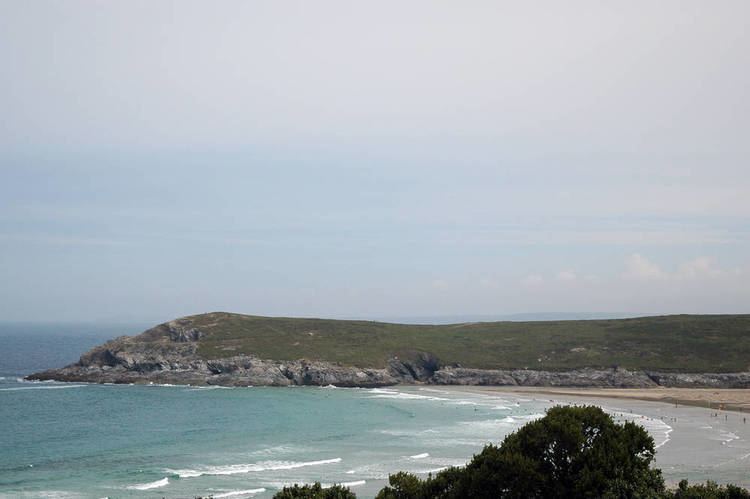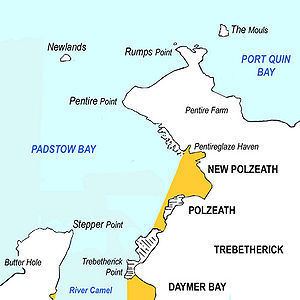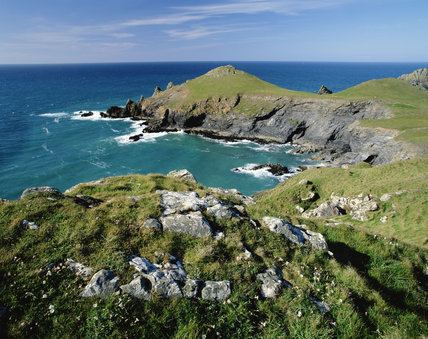 | ||
Pentire head walk with frankie 5th april 2015
Pentire Head (Cornish: Penn Tir, meaning "headland") (grid reference SW934802) is a headland and peninsula on the Atlantic coast in North Cornwall, England, UK and is about one mile square. The headland projects north-west with Pentire Point at its north-west corner and The Rumps promontory at its north-east corner.
Contents
- Pentire head walk with frankie 5th april 2015
- Pentire head newquay drone footage
- Etymology
- Geography
- For The Fallen
- References
Pentire head newquay drone footage
Etymology

The origin of the name is from Cornish penn (head) and tir (land): another headland with the name Pentire is further west near Crantock.
Geography
Pentire Point and Stepper Point stand at either side of the mouth of the River Camel estuary (Pentire to the north-east, Stepper to the south-west). To the south of Pentire Point is the small seaside resort of Polzeath. The coastline around the headland is owned by the National Trust, although the bulk of the headland itself is let to Pentire Farm.

The Rumps promontory is the site of Iron Age clifftop fortifications - the series of mound and ditch earthworks remain clearly visible today.

The entire headland forms the Pentire Peninsula Site of Special Scientific Interest, designated for its geology and flora and fauna including nationally rare plants. Important examples noted include slates from the Upper Devonian period, several invertebrate species, predatory birds and grey seals.
A small island named Newland lies about one mile (1,600 metres) to the north-west of Pentire Point. Another small island named The Mouls lies 300 yards to the north-east of The Rumps and supports colonies of seabirds. Beyond The Rumps, the coastline veers southeast into Port Quin Bay.
The South West Coast Path closely follows the coastline of the headland, and sightseeing boat tours regularly travel along the coast from the nearby port of Padstow.
For The Fallen
The poet Laurence Binyon wrote For The Fallen (first published in The Times in September, 1914) while sitting by the cliffs between Pentire Point and The Rumps. A stone plaque was erected in 2001 to commemorate the fact and bears the inscription
For The FallenComposed on these cliffs 1914The plaque also bears the fourth stanza of the poem:
They shall grow not old, as we that are left grow oldAge shall not weary them, nor the years condemnAt the going down of the sun and in the morningWe will remember them